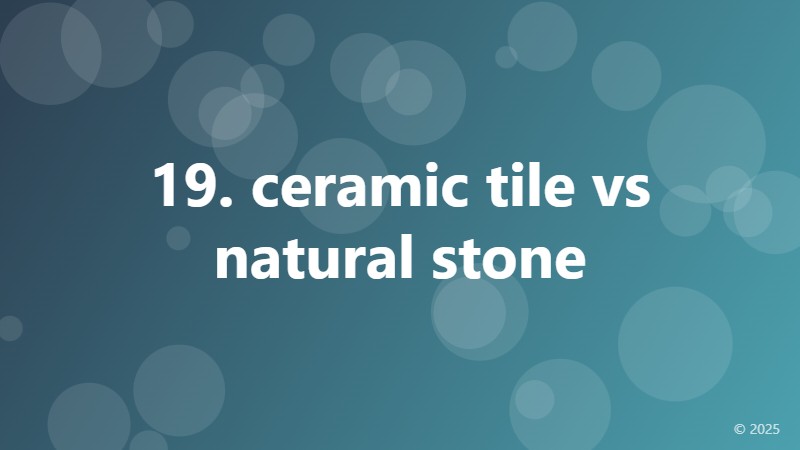19. ceramic tile vs natural stone

The Age-Old Debate: Ceramic Tile vs Natural Stone
When it comes to choosing the perfect flooring or wall material for your home, two popular options often come to mind: ceramic tile and natural stone. Both have their unique characteristics, advantages, and disadvantages, making the decision-making process a bit overwhelming. In this article, we'll delve into the world of ceramic tile and natural stone, exploring their differences, benefits, and drawbacks to help you make an informed decision.
The Aesthetic Appeal
Ceramic tiles are known for their versatility and wide range of design options. From modern and sleek to traditional and rustic, ceramic tiles can mimic the look of natural stone, wood, or even metal. They're also available in various shapes, sizes, and colors, making them a great choice for those who want to add a personal touch to their space. On the other hand, natural stone is, well, natural. Its unique patterns, colors, and textures are unlike any other material, giving it an unparalleled aesthetic appeal.
Durability and Maintenance
Ceramic tiles are generally more durable and easier to maintain than natural stone. They're resistant to scratches, cracks, and fading, and can withstand heavy foot traffic. Cleaning is also a breeze, as they're impervious to stains and spills. Natural stone, on the other hand, requires more maintenance and care. It's prone to scratches, cracks, and etching, and can be damaged by acidic substances like wine or citrus. However, with proper sealing and maintenance, natural stone can last for decades.
Cost and Installation
Ceramic tiles are generally more affordable than natural stone, especially when it comes to installation costs. They're also easier to install, as they can be laid directly over existing flooring or walls. Natural stone, on the other hand, requires more labor and expertise to install, which can drive up costs. Additionally, natural stone may require additional materials, such as mortar and grout, which can add to the overall expense.
Practicality and Functionality
Ceramic tiles are a great choice for high-traffic areas, such as kitchens and bathrooms, due to their durability and ease of maintenance. They're also resistant to moisture and humidity, making them ideal for areas prone to water exposure. Natural stone, while beautiful, may not be the best choice for these areas, as it can be damaged by excessive moisture. However, natural stone can be used in low-traffic areas, such as living rooms or bedrooms, where its aesthetic appeal can shine.
The Verdict
In the end, the decision between ceramic tile and natural stone comes down to your personal preferences, lifestyle, and budget. If you want a low-maintenance, durable, and affordable option, ceramic tile may be the way to go. However, if you're willing to invest in a material that exudes luxury and sophistication, natural stone is the perfect choice. Whichever you choose, rest assured that you'll be getting a high-quality material that will enhance the beauty and value of your home.